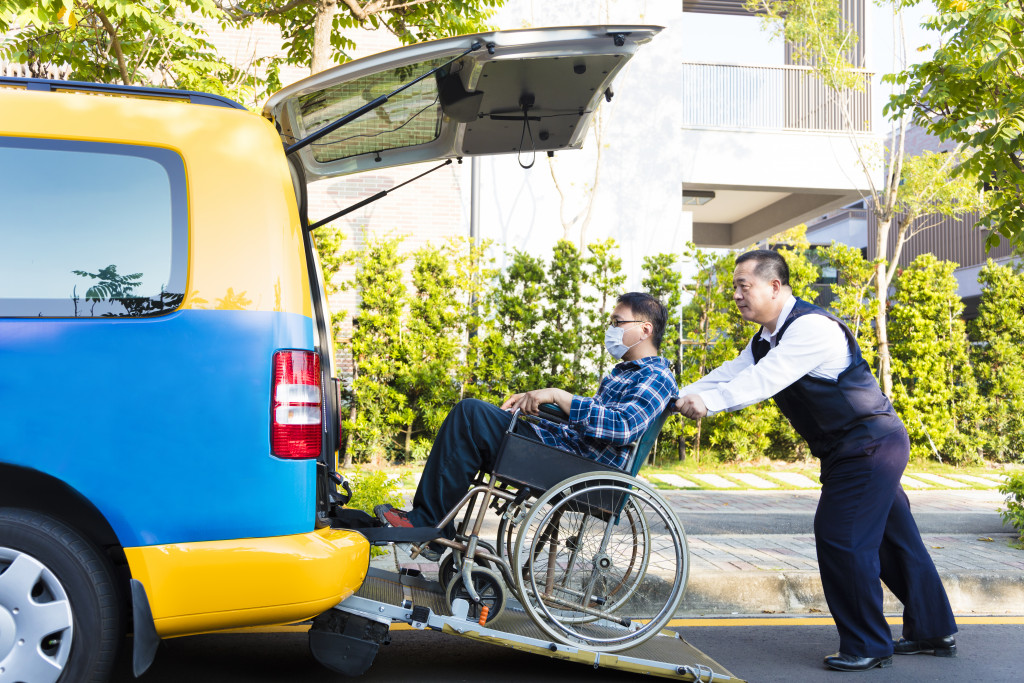Transportation is a major struggle for people with disabilities. According to the Institute of Medicine (US) Committee on Disability in America, around one-third of the handicapped have no access to public transit, making them more reliant on private vehicles.
Whether you’re driving with a disability or have a loved who is a PWD, customizing your vehicle to accommodate PWD needs is crucial for improved quality of life.
Here’s a guide on modifying a vehicle for drivers with disabilities.
Understanding The Unique Needs
Ensuring that you have optimal control while driving is the key element of vehicle modifications. The first step to achieve it is to have needs evaluation, which involves working with a certified driver rehabilitation specialist, a service offered by organizations like ADED: The Association for Driver Rehabilitation Specialists.
A specialist is likely to assess your physical, visual, and mental abilities to understand your current and future equipment needs. The evaluation may include the following:
- Sharpness of vision
- Reaction times and coordination
- Making decision and judgment
- Muscle strength and endurance
- Range of motion
- Ability to drive using adaptive equipment
Identifying The Necessary Modifications
Once you’re done with the evaluation, identifying the necessary modifications comes next. It depends on what the specialist recommends based on your disability. The modifications can be as simple as extending the pedals. Or it can be more complex such as automating seats and putting ramps.
Whatever they are, remember that they should support your special driving needs. Below are some modifications you may encounter with accessible vehicles:
Hand Controls
If you’re incapable of using foot pedals, hand controls will allow you to operate through the buttons or levers for applying brakes. Note that there are different types of hand controls.
The push/rock style works best for drivers with no finger dexterity, while the push/right angle style is a better option for those who have limited finger function. If you have full or limited dexterity and restricted vehicles, the push/rotate style would be ideal.
Wheelchair Access
Wheelchair access is one of the most common modifications for disability. Installing lifts can make it possible to hoist and store your wheelchair in your vehicle without any assistance.
Pedal Extensions
Due to disability or stature, some people struggle in using their right foot or reaching the pedals while they are driving. But you can modify the pedals to be closer to your driving seat. With pedal extensions, you can apply the brakes with greater comfort and improved control.
Seat Modifications
Your ability to enter or exit the vehicle is a vital factor when it comes to seat modifications. You can adjust the seat position by installing power seat attachments. But there are also vehicle transfer seats that allow you to move from the wheelchair to the car seat with ease.
Remember that you need a qualified and experienced dealer to handle these vehicle modifications. Ensure that you’re working with someone who is a member of the National Mobility Equipment Dealers Association.

Selecting The Right Vehicle
If you need to buy a new vehicle to modify, you must ensure it passes all the prerequisites. As much as possible, go for an option that will require fewer modifications to meet your needs.
While a certified driver rehabilitation specialist can help select the right vehicle to modify, they can also assess whether the vehicle you already own qualifies for modifications.
But regardless, you can use the following points during vehicle selection:
- What is the nature of your physical limitations?
- Does the equipment you need require a lot of space?
- How will you get in and out of the car?
- Does it fit your body and height?
- Is there enough space for the vehicle at home or the workplace?
Covering The Modification Costs
The cost of modifying a vehicle will differ depending on what you need. You can spend less than $100 for a simple pedal extension or $2,000 for hand controls. But according to the National Highway Traffic Safety Association (NHTSA), a new vehicle modified with adaptive equipment will cost between $20,000 to $80,000.
You can start looking for opportunities for financial assistance to help you pay part or all the cost of vehicle modification. But note that acquiring assistance often depends on several factors, such as personal income, physical need for adaptations, insurance coverage and location.
Here are few options that will help you cover the modification costs:
(US) Vocational Rehabilitation Agencies
The US vocational rehabilitation agencies aim to help people with disabilities work and lead independent lives. They provide funding for transportation, home or vehicle modifications, and other services to qualified individuals with disabilities. Reach out to your state’s Department of Vocational Rehabilitation.
(Australia) National Disability Insurance Scheme (NDIS)
The NDIS provides funding for services that will help people with disabilities maximize their potential and experience a fulfilling life. Getting mobility equipment and vehicle modifications are among the types of support services at that they may fund. If you are in Australia, it’s helpful to develop a plan with NDIS providers to get a wide range of support for your condition.
(UK) Motability Charitable Grants
Motability is a charity in the United Kingdom that supports the independence of people with disabilities. It has Mobility Grant Programmes that provide financial help towards mobility support for disabled people. Their vision is no disabled person shall be deprived because of poor access to transportation.




